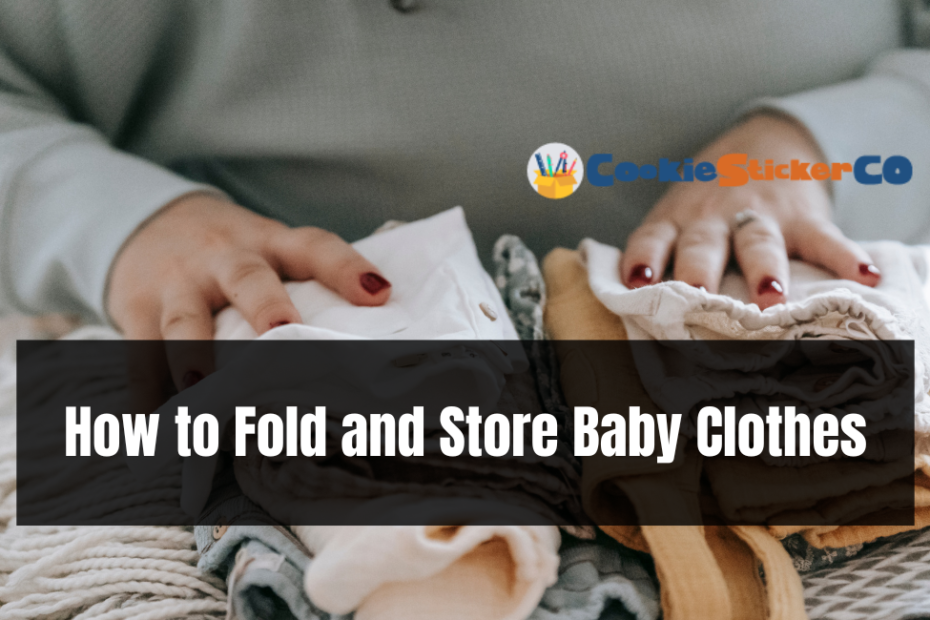Learn the best practices and tips on how to fold and store baby clothes efficiently. This comprehensive guide provides insights and step-by-step instructions to keep your baby’s clothing organized and in top condition.
As a new parent, you may find yourself overwhelmed with the sheer volume of baby clothes piling up. Keeping them clean, organized, and easily accessible can be a challenge. In this article, we will provide you with a complete guide on how to fold and store baby clothes, ensuring they stay in great condition and make your life a lot easier. We’ll cover everything from proper folding techniques to smart storage solutions, saving you time and energy while maintaining your little one’s adorable wardrobe.
How to Fold and Store Baby Clothes
Let’s dive into the step-by-step process of folding and storing baby clothes to maximize space and keep everything tidy.
1. Sorting the Clothes by Size and Type
Before you start folding, it’s crucial to sort the baby clothes by size and type. This simple yet effective step will help you quickly find the right outfits for your growing baby without creating a mess. Use separate baskets or bins for different sizes and categories such as onesies, sleepwear, and outerwear.
2. The Marie Kondo Folding Method
The Marie Kondo folding method has gained immense popularity due to its space-saving and visually appealing results. It involves folding baby clothes into neat rectangles that stand upright, allowing you to easily see what you have in your drawers.
To apply this technique:
- Lay the garment flat on a clean surface.
- Fold the sides towards the center, creating a long rectangle.
- Fold the bottom part up, making a smaller rectangle.
- Stand the folded piece upright in the drawer.
This method works wonders for onesies, t-shirts, and pants, keeping them well-organized and easily accessible.
3. The KonMari Approach for Storing Baby Clothes
To complement the folding method, embrace the KonMari approach to store your baby’s clothes efficiently. This method encourages you to store items vertically, making the most of your drawer space and preventing clothes from becoming creased or forgotten at the bottom of a pile.
Follow these steps to implement the KonMari approach:
- Use drawer dividers to separate different categories of clothing.
- Place folded items vertically, with the most frequently used ones in front.
- Store baby clothes in a way that sparks joy and creates a visually pleasing arrangement.
The KonMari method not only optimizes your storage space but also adds a touch of elegance to your baby’s wardrobe.
4. Utilizing Vacuum-Sealed Bags for Seasonal Storage
As your baby grows, some clothes may become temporarily outgrown due to size or season. To save space and protect these clothes from dust and pests, consider using vacuum-sealed bags for seasonal storage.
Vacuum-sealed bags:
- Reduce the volume of clothing, making them easier to store.
- Prevent moisture, mold, and odors from affecting the garments.
- Enable you to see the contents through transparent bags, simplifying identification.
Just place the clothes inside the bag, seal it, and use a vacuum cleaner to remove excess air. These bags are a game-changer when it comes to storing baby clothes for extended periods.
5. Baby Clothes Hangers for Special Outfits
Some baby clothes, like dresses and tiny suits, are too delicate or fancy for folding. To preserve their shape and avoid wrinkles, invest in baby clothes hangers for these special outfits.
When using hangers:
- Choose soft, padded hangers for delicate fabrics.
- Avoid using metal hangers that could damage clothing.
- Hang dresses, suits, and formal wear individually to maintain their appearance.
This method keeps your baby’s special outfits in pristine condition and ready to wear for special occasions.
6. Organizing Baby Clothes by Occasion
As your baby’s wardrobe grows, organizing the clothes by occasion becomes increasingly helpful. Create separate sections or bins for everyday wear, sleepwear, playtime outfits, and dressier options.
By organizing clothes this way, you’ll:
- Easily find suitable outfits for different occasions.
- Prevent everyday wear from being used for special events, preserving their quality.
Keep the sections clearly labeled and maintain this system as your baby’s wardrobe evolves.
7. Baby Clothes Drawer Dividers
Drawer dividers are an excellent addition to any baby clothes storage solution. They allow you to compartmentalize clothes within drawers, preventing them from mingling and creating a mess.
With drawer dividers, you can:
- Organize clothes by size or type.
- Keep socks, bibs, and accessories in separate compartments.
- Maximize drawer space while maintaining neatness.
Install these dividers in your baby’s dresser drawers for an organized and clutter-free wardrobe.
8. Rolling Clothes for On-the-Go Convenience
When traveling or on outings, rolling baby clothes can be a lifesaver. This space-saving technique allows you to pack more outfits efficiently.
Follow these steps to roll clothes for easy travel:
- Lay the item flat and smooth out any wrinkles.
- Fold the garment in half lengthwise.
- Roll the clothing tightly, starting from the folded edge.
Rolling baby clothes is especially useful for road trips, vacations, and weekend getaways.
9. Utilizing Underbed Storage
Underbed storage can be a lifesaver when you have limited closet space. It’s an ideal spot for storing clothes that your baby hasn’t grown into yet or seasonal outfits.
Choose shallow storage containers that can easily slide under the bed and keep the clothes well-protected and easily accessible.
Read more: How to Use Tuning Forks for Chakras
